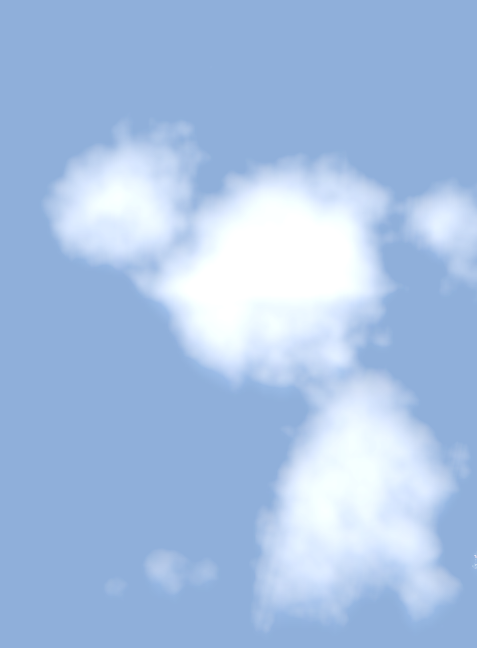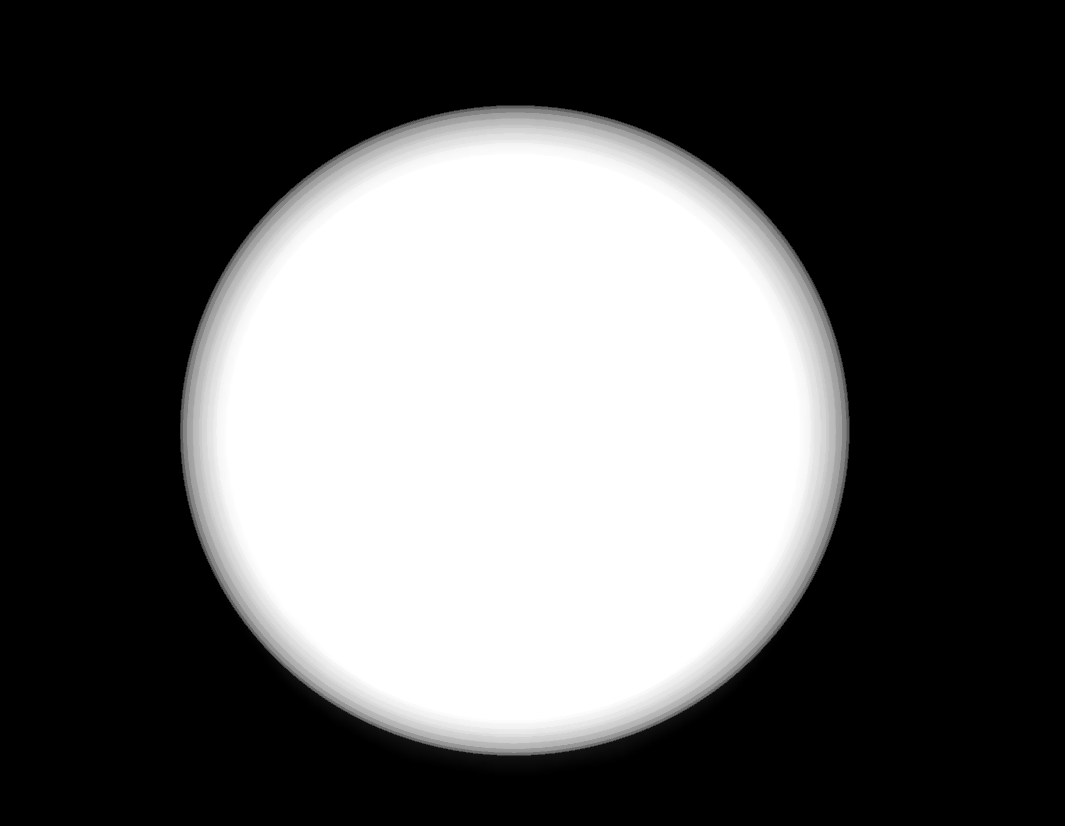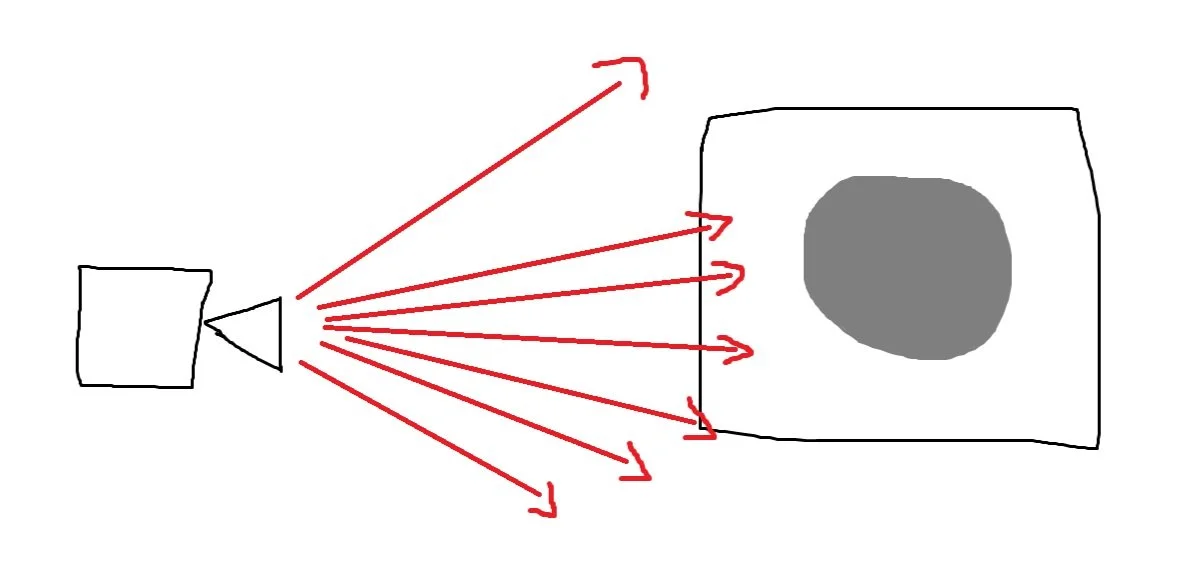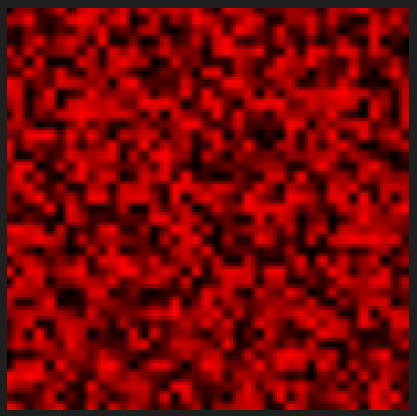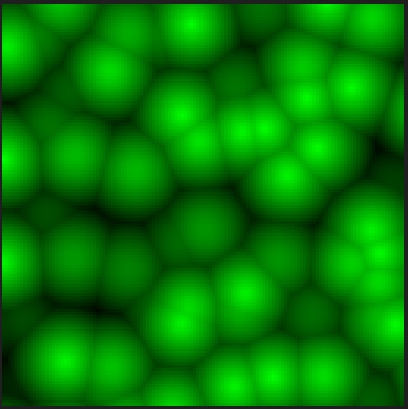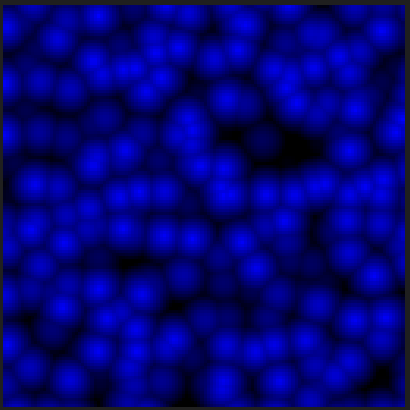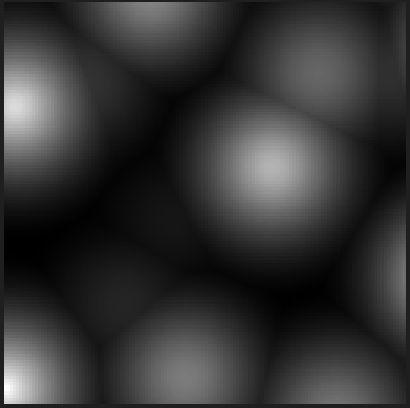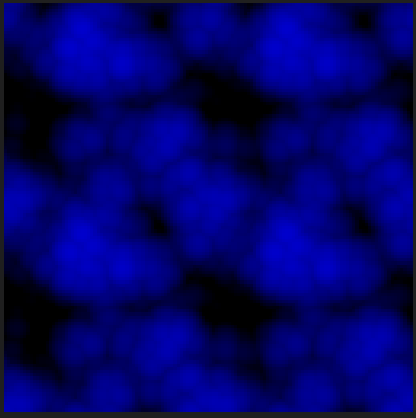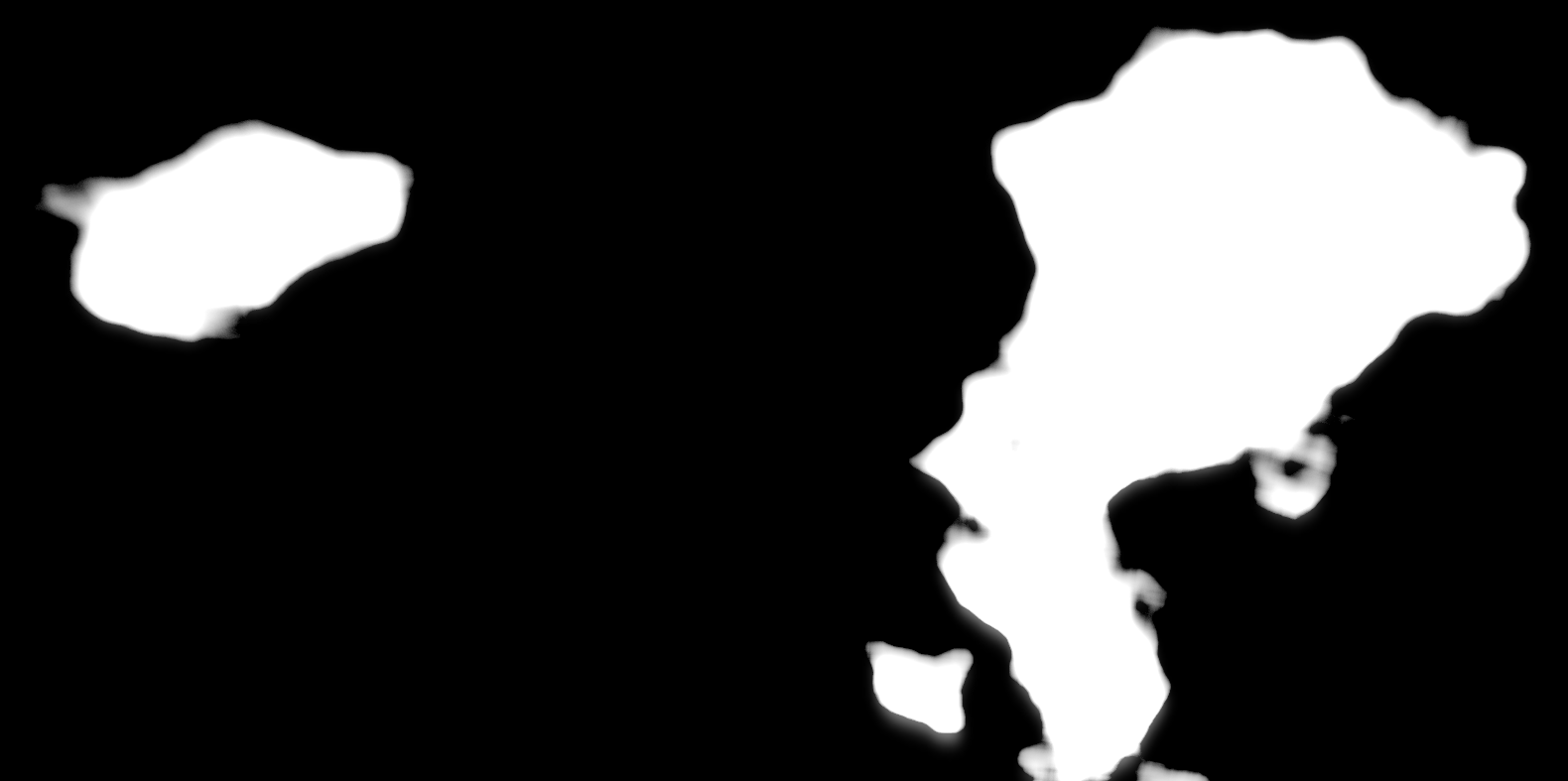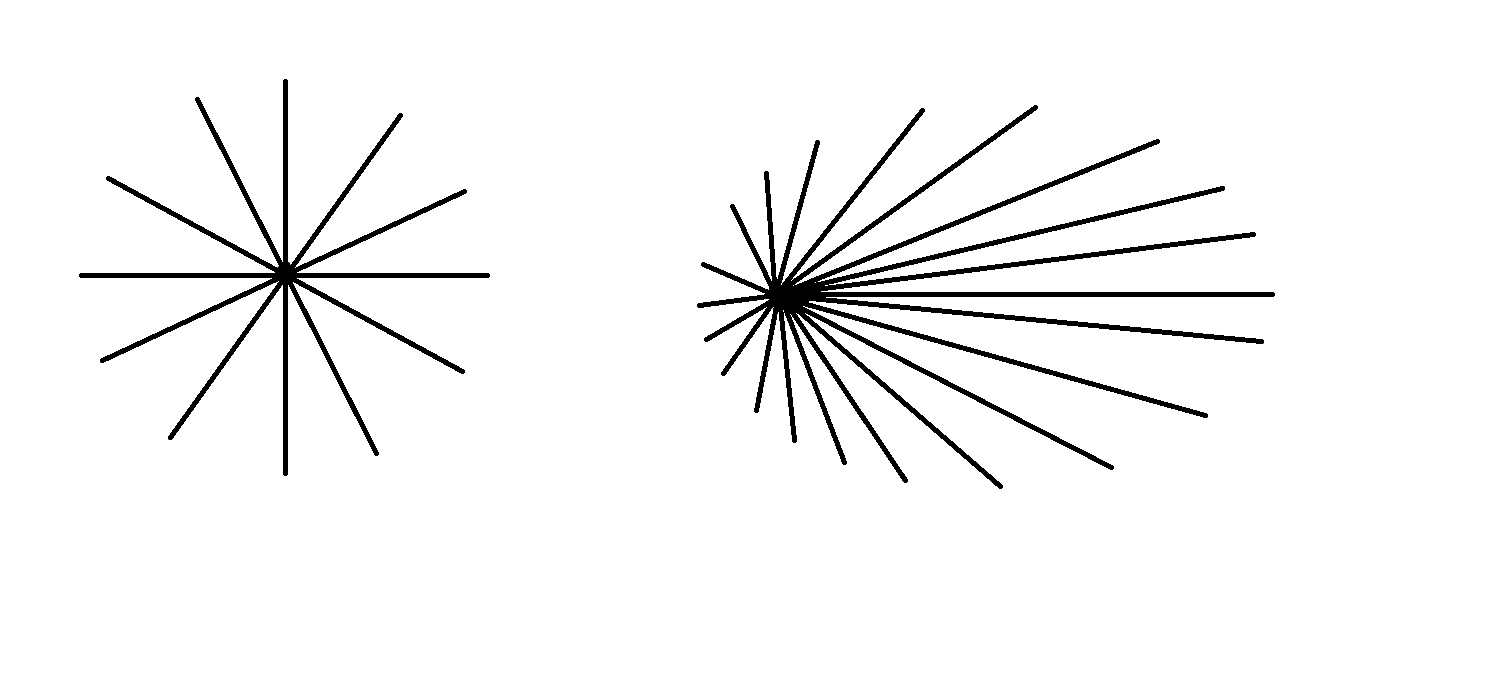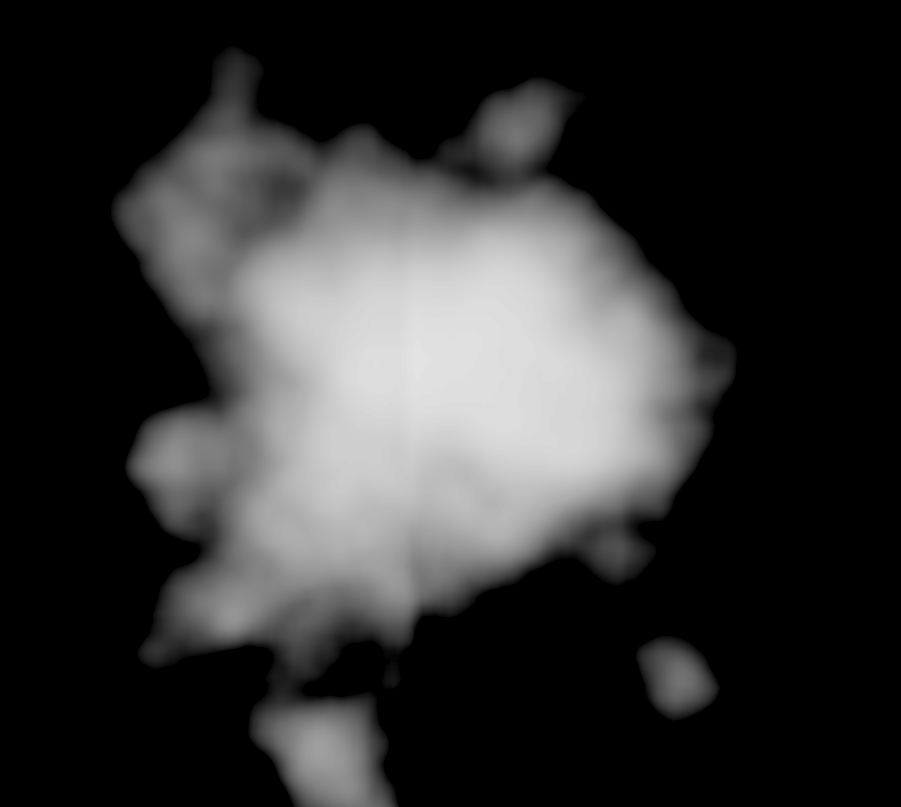Volumetric Clouds
For my specialization I wanted to learn something new about graphics programming, while also having something nice-looking to show. I chose to do volumetric clouds in the graphics engine I made during the graphics programming course at The Game Assembly.
When I was planning the project, I also had to research what to do, as I didn’t know how volumetric clouds was done at all. I gathered that programming clouds could be split into three parts - volumetric raymarching, noise and light calculations, and I planned my specialization accordingly.
Raymarching
The first thing I raymarched was a sphere inside a cube. The only thing I did was to add white with a little alpha if a sample from the ray was inside the sphere and black if it didn’t.
The raymarched sphere in engine. Notice how the edges are more dark, as there are less samples of the ray intersecting with the sphere.
What I did when raymarching was to send out ray for every pixel on the screen, and if they hit the cube, I would start sampling, then move along a set distance, and then sample again. When I sampled, I just checked if the position i sampled from was inside the sphere.
The first thing I did in this project was to research raymarching. What I gathered was that it is a broad topic, and that the thing I was looking for was called volumetric raymarching.
How it would look “programatically“ when I raymarched a sphere inside a cube
The final raymarch code
Noise
The noise was the step of the process that I ended up spending the most time on, mostly because I tried out different ways to blend the noise together, and I iterated on the noise itself to shape the clouds better.
I made the choice to generate the noise in a compute shader mostly because I wanted to learn compute shaders, but also because it felt like the fastest way to fill a 3D texture with different values.
My first iteration of noise was just plain simplex noise in the red channel, and different frequencies of inverted worley noise in the other three channels. I generated them to a 128 x 128 x 128 texture.
With this type of noise, I thought that the clouds became too round, and I tried to have several layers of worley noise of different frequencies overlapping in each channel instead. I also switched out the simplex to a regular perlin noise, and overlapped the red channel too with worley noise.
The first iteration of noise I made
The second iteration of noise I made
The clouds when the noise was done, without any light calculations
Light Calculations
The last big step was calculating how the light behaved inside the clouds. The first thing I tried using was Beer-Lambert’s law for the attenuation of the light. After reading Guerilla Games presentation about their clouds and their beer-powder approximation, I implemented it, and thought it looked better than just Beer'-Lambert’s law.
Green: Beer-Lambert’s Law
Blue: Beer-Powder approximation
The next calculation I used was Henyey-Greenstein’s approximation for approximating the anisotropic light scattering. I read in a paper from EA that they used the approximation function twice, both for forward and backward scattering, and lerped between them.
Left: Isotropic scattering (equal scatter in all directions)
Right: Anisotropic scattering (weighted scatter towards one direction)
The clouds with both Beer-Lambert’s law and anisotropic scattering applied
When I had implemented both Beer-lambert’s law and anisotropic scattering, I changed the clear color of the texture I rendered the clouds on, and also played around with the noise some more. I ended up going back to the first iteration on the green, blue and alpha channels, since I thought they looked better with light calculations on them.
Future improvements
I am happy with the results as I feel like I have learned a lot. There are still some bugs I would like to fix if I had the time.
The first bug bug being a weird, sharp edge in the sky (higher picture), especially noticeable on startup. After a while, it evens out and becomes less noticeable (lower picture). I think it has to do with all noise textures not tiling, but I am not sure of it.
Another bug I have is this strange banding, that becomes more visible the more horizontal the viewing direction gets. I read in the EA paper from before that they randomly offset the samples within their range and then blend it with the previous frame.
If I had more time
The next step, I think would be to research more about real clouds and try to replicate some different types. I would also like to research if there are more light calculations I could do to make them even better looking.
I would also like to add a skybox to the scene. Even though it doesn’t really have anything to do with the volumetric clouds project itself, it feels like it helps the clouds look better than just changing the background color.
